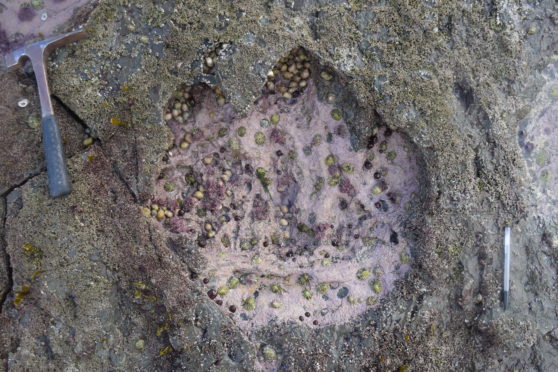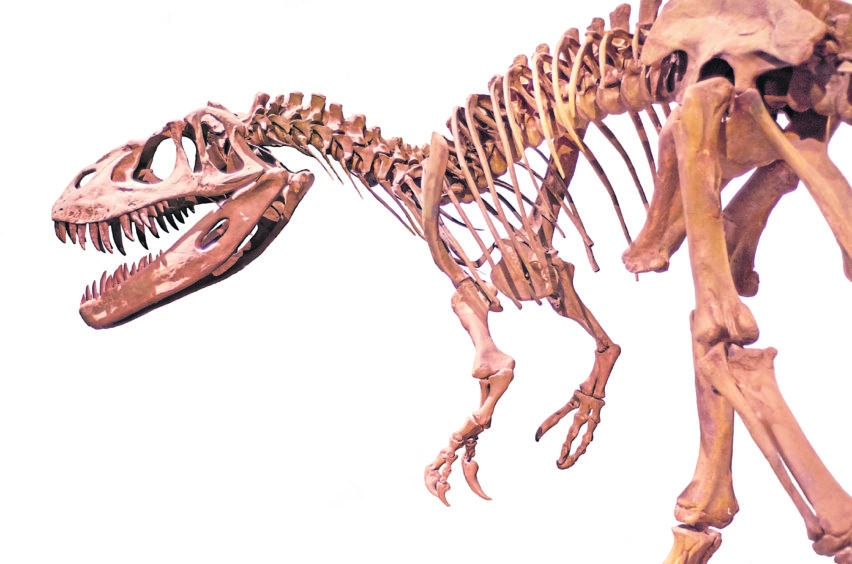
Scotland’s own Jurassic Park has been hailed by scientists as among the best in the world for fossils.
The Kilmaluag Formation on the Isle of Skye is said to hold vital clues for understanding the time when dinosaurs walked the planet millions of years ago. The area, on the most northerly point of the Trotternish peninsula, contains the fossils of tetrapods – a group that includes dinosaurs.
Now a scientific paper published by Cambridge University Press has detailed the “wealth of material” found in the location.
It says the area has some of UK’s the best vertebrate fossils from the Mesozoic period – 252 million to 66 million years ago – and is among the best in the world for four-footed dinosaurs (tetrapods) from the Middle Jurassic period, 170 million years ago.
The report says that since 1971 Skye has yielded “small-bodied tetrapods, including salamanders, choristoderes, lepidosaurs, turtles, crocodylomorphs, pterosaurs, dinosaurs, non-mammalian cynodonts and mammals, alongside abundant fish and invertebrates”.
A tooth from a sauropod, an enormous herbivore dinosaur, such as a diplodocus has been found there, along with other fossils from animals as big as a Tyrannosaurus rex. The report notes that, unlike sites in England, fossil finds also included partial skeletons, providing crucial data. It concludes that the area’s fossils are of global significance, due to the completeness of some of the specimens.
Often the target of fossil hunters, dinosaur sites on Skye were last year given official protection when the Minister for Rural Affairs and the Natural Environment, Mairi Gougeon, signed a Nature Conservation Order (NCO) at Staffin Museum, home of dinosaur bones and footprints found nearby.
The key aim of the conservation order is to prevent rare vertebrate fossils from being damaged through irresponsible collection and removal from Skye’s globally important fossil sites.
Importantly, the NCO aims to encourage local people and the wider public to report any potentially important fossil finds. In the past, important fossil discoveries have been damaged and specimens taken from the island and moved to private collections. In 2016 an attempt to take a plaster cast of a dinosaur footprint at An Corran risked significant damage to a feature that has become an important tourist attraction. Known as the Dinosaur capital of Scotland, the rich Middle Jurassic fossil fauna of Skye is gradually being revealed with new discoveries still being made. These include some of the first fossil evidence of dinosaur parenting.
Housed at Staffin Museum, a rock slab shows the footprints of baby dinosaurs, together with the print of an adult. It is also believed Skye is home to fossil remains of flying reptiles.
Scottish National Heritage geologist Colin MacFadyen said: “Skye’s Jurassic fossils can help answer crucial questions about ancient ecosystems and pave the way for exciting advances in our understanding of vertebrate evolution. It is therefore in the national and international interest that these important fossils are collected responsibly and adequately protected.”

Enjoy the convenience of having The Sunday Post delivered as a digital ePaper straight to your smartphone, tablet or computer.
Subscribe for only £5.49 a month and enjoy all the benefits of the printed paper as a digital replica.
Subscribe © Shutterstock
© Shutterstock